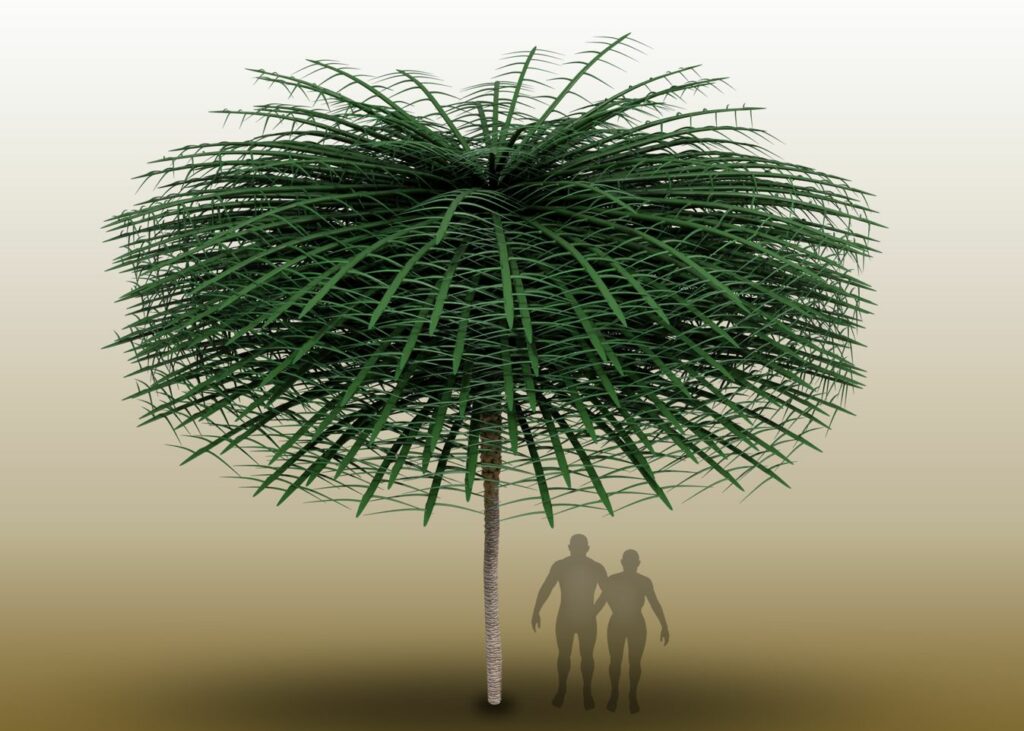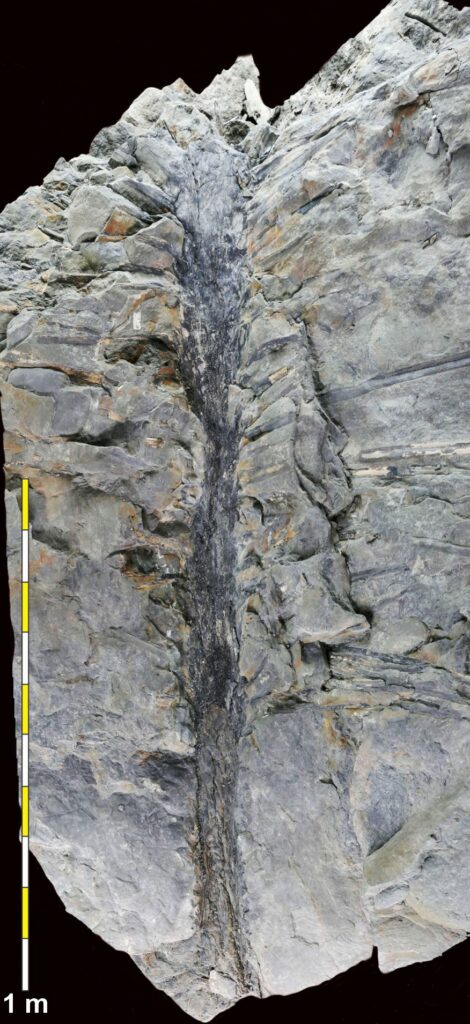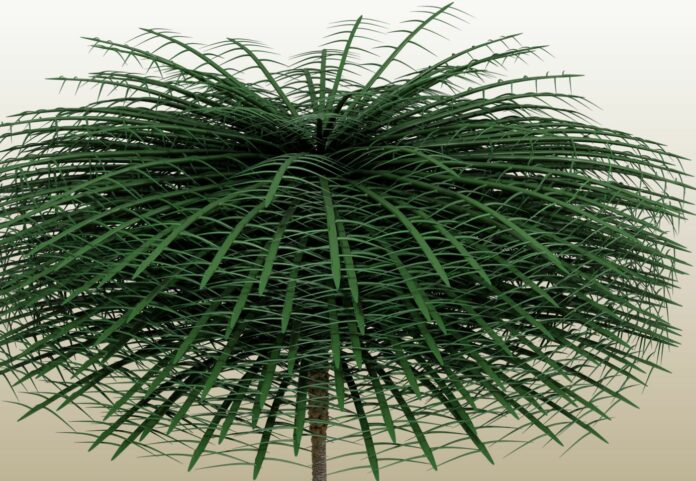“We all have a mental concept of what a tree looks like, depending on where we live on the planet, and we have a vision of what is familiar,” but “the way in which this tree produced hugely long leaves around its spindly trunk, and the sheer number over a short length of trunk, is startling.”
A new study describes fossilized trees from New Brunswick, Canada with a surprising and unique three-dimensional crown shape.
Beyond Imagination: Rare 3D Fossils Reveal Strange Forms Taken By Ancient Trees
Within the fossil record, trees are commonly preserved solely as trunks, lacking the leaves that would reveal their canopy and overall structure.
However, a recent report in the journal Current Biology, dated February 2, details an extraordinary discovery. Researchers describe fossilized trees from New Brunswick, Canada, showcasing an unexpected and distinctive three-dimensional crown shape.
“The way in which this tree produced,” remarks Robert Gastaldo of Colby College in Waterville, Maine, “hugely long leaves around its spindly trunk, and the sheer number over a short length of trunk, is startling.”
According to him, the shapes exhibited by these trees, dating back 350 million years, bear resemblance to ferns or palms, despite palms not emerging until 300 million years later. In ferns or palm trees, functional leaves typically cluster at the top and are relatively sparse.
“In contrast, Sanfordiacaulis preserves more than 250 leaves around its trunk, with each partially preserved leaf extending 1.75 meters from it,” Gastaldo explains.
They “estimate that each leaf grew at least another meter before terminating.”

“This means that the ‘bottle brush’ had a dense canopy of leaves that extended at least 5.5 meters (or 18 feet) around a trunk that was non-woody and only 16 centimeters (or 0.5 feet) in diameter. Startling to say the least.”
Long-term international cooperation with Matthew Stimson and Olivia King of Saint Mary’s University in Halifax and the New Brunswick Museum in Saint John made this work feasible. The results of the study provide valuable new understandings into the development of plants and arborescence—plants that reach a maturity height of at least 15 feet, or tree height. They serve as a reminder that, over the course of life on Earth, there have been trees that have appeared unlike any we have ever seen, and some that even seem like they may have emerged from Dr. Seuss’s imagination, according to the experts.
“We all have a mental concept of what a tree looks like, depending on where we live on the planet, and we have a vision of what is familiar,” Gastaldo adds. “The fossil on which we report is unique and a strange growth form in the history of life. It is one of evolution’s experiments during a time when forest plants underwent biodiversification, and it is a form that seems to be short lived.”
The fossils under scrutiny were protected through a sudden and catastrophic burial caused by earthquakes, which occurred along the edge of a rift lake amidst trees and vegetation. Approximately 7 years prior, the initial fossilized tree was discovered within a quarry, albeit only a partial sample was retrieved. It wasn’t until several years later that four additional specimens of the same plant, closely clustered in space, were unearthed, as per Gastaldo’s account.

One of the samples showcased the distinct departure of leaves from the tree’s apex, rendering it ‘absolutely unique.’ According to researchers, it stands among the rare instances in a fossil record spanning over 400 million years, where a trunk is conserved with the crown leaves still attached.
“Any fossil tree with an intact crown is a rarity in the history of life,” Gastaldo adds. “Having the crown leaves attached to a trunk, by itself, begs the questions what kind of plant is it, how is that plant organized, And is it some form that continues to the present, or is it outside of the ‘normal’ concept of a tree? All of these questions, and more, led to this multi-year endeavor.”
According to the researchers, the tree probably depended on its distinctive growth pattern to optimize light absorption and minimize competition with other ground plants. They propose that the tree signifies the earliest indication of smaller trees thriving beneath a taller forest canopy. This implies that plant diversity during the Early Carboniferous era was more intricate than previously assumed, indicating that Sanfordiacaulis existed during a period when plants were exploring various potential forms or structures.
“The history of life on land consists of plants and animals that are unlike any of those that live at the present,” Gastaldo comments. “Evolutionary mechanisms operating in the deep past resulted in organisms that successfully lived over long periods of time, but their shapes, forms, growth architectures, and life histories undertook different trajectories and strategies. Rare and unusual fossils, such as the New Brunswick tree, is but one example of what colonized our planet but was an unsuccessful experiment.”
Image Credit: TIM STONESIFER
